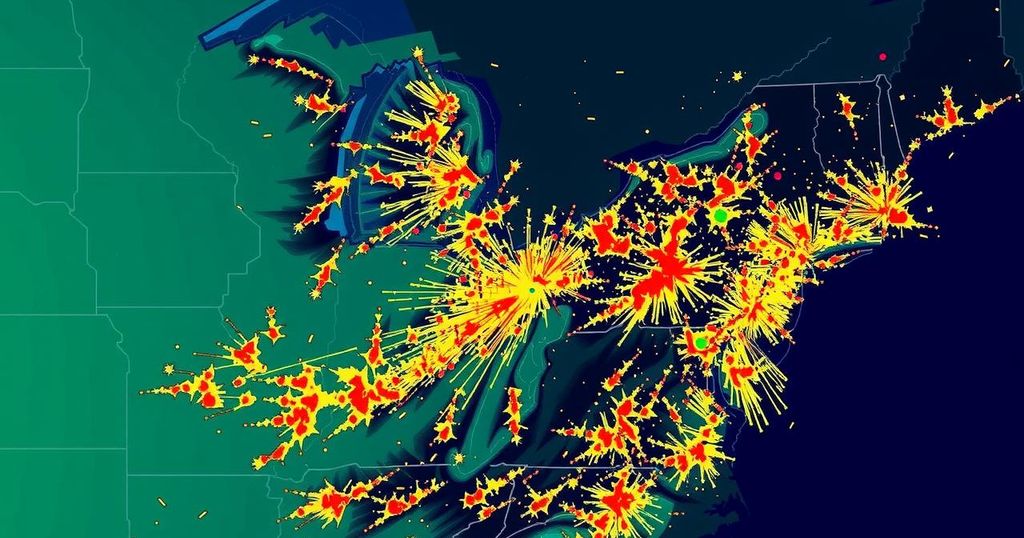Unexpected Earthquake Hits Kansas and Midwest: December Seismic Surprise

An unexpected magnitude 2.7 earthquake struck western Kansas on December 1st at 6:45 p.m. local time. The epicenter was located 7 kilometers from Bogue. Although light tremors were reported, no damage or injuries occurred. Local experts attribute such events to fault lines or human activity, while emphasizing the importance of preparedness for residents in typically low-seismic areas.
On December 1st, an unexpected earthquake measuring 2.7 magnitude struck western Kansas and portions of the Midwest. The tremor occurred at 6:45 p.m. local time, with its epicenter located approximately 7 kilometers south-west of Bogue, at a depth of 9.3 kilometers. According to the U.S. Geological Survey, this tremor experienced light shaking, resulting in a Level IV classification on the Modified Mercalli Intensity Scale. Fortunately, no damages or injuries were reported in the aftermath of this seismic event, although several residents noted that they felt the tremors.
While the occurrence of minor earthquakes is not unheard of in Kansas, such events are exceedingly rare for the broader Midwest region, which generally exhibits minimal seismic activity compared to other areas of the United States. Experts speculate that these earthquakes may be linked to pre-existing fault lines or could potentially be induced by human activity, although further investigation into the specific causes of this recent earthquake continues.
Seismologists recommend that residents across this region remain vigilant about earthquake preparedness, emphasizing the importance of being prepared even in areas where such seismic disturbances are not frequent. Those who experienced the recent tremors are encouraged to report their sensations on the USGS “Did You Feel It?” platform, a tool designed to assist in the collection and analysis of seismic data from public reports. This incident underscores the unpredictable character of seismic events in areas generally unaccustomed to such occurrences, elevating awareness among local populations about potential geological hazards.
The rarity of significant seismic activity in the Midwest, particularly in states like Kansas, heightens the significance of events such as the recent magnitude 2.7 earthquake. Traditionally, this region experiences minimal earthquakes; hence, when they do occur, as in this case on December 1st, they attract considerable attention from both residents and geological experts. The U.S. Geological Survey plays a vital role in monitoring these occurrences, classifying them, and urging community preparedness. Additionally, the relationship between human activities and seismic activity is an area of ongoing research, especially concerning induced seismic events. While Kansas may see infrequent earthquakes, awareness of preparedness can save lives and mitigate damage should larger quakes occur. Any unusual seismic activity can prompt discussions about regional geology, including potential faults and the implications of human-induced seismicity, making this recent quake a focal point for local educational initiatives.
In conclusion, the unexpected earthquake that rattled western Kansas and parts of the Midwest serves as a reminder of the region’s geological unpredictability. While minimal damage was reported, the tremor highlights the importance of earthquake preparedness, especially in areas where seismic activity is uncommon. Continued investigation into the specifics of the quake and its potential causes will provide valuable insights into the region’s seismic landscape. Residents are encouraged to report their experiences to contribute to historical data and support ongoing research into such events.
Original Source: countryherald.com






